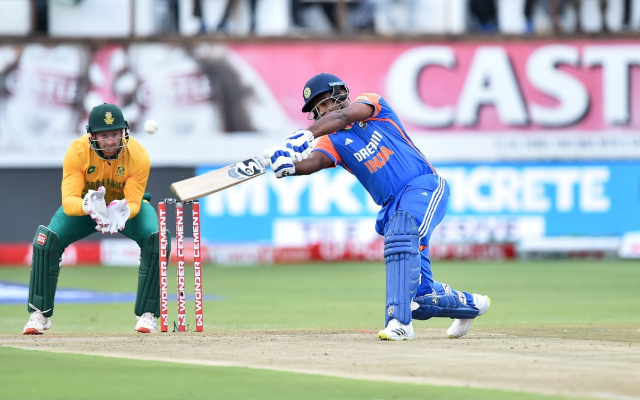
After the first two overs of the fourth and final T20I between India and South Africa at the Wanderers, the visiting side had progressed to 16 for no loss. At that juncture, it just seemed like any other normal T20I from the past. That is not how it exactly panned out at the completion of India’s innings, as they finished with a monstrous score of 283 for the loss of only one wicket. The eye-popping stat was India adding 210 after the Powerplay, alongside 154 in the last 10 overs and 64 in the final five.
To make it even better, in three of the four games, India accumulated scores in excess of 200. Yes, at Port Elizabeth, India could muster a total of just 124, but both batting units struggled in that match, with the pitch offering enough help for the pacers and spinners. It wasn’t much different in the three-match series against Bangladesh, where India raced to scores of 132 for 3 in a mere 11.5 overs, 221 and a whopping 297 for 6. Even in Zimbabwe, India’s highest score was a substantial 234 in the second game.
Some of the risks taken by the batters also act as an indicator of India’s ultra-aggressive template. The first delivery of the series itself witnessed Sanju Samson walked down the pitch to Marco Jansen. And it was followed by Abhishek Sharma attempting a slog across the line. Those two deliveries resulted in a solitary run, but it was a warning sign for the opposition.
Sanju went on to crack two hundreds at a blistering strike-rate of 194.59. Although Abhishek couldn’t make most of his starts, his strike-rate of 173.21 was noteworthy. Just like Sanju, Tilak Varma, the No.3 bat, also compiled two centuries at an astounding strike-rate of 198.58. Suryakumar Yadav, the new T20I skipper, and known for his 360-degree stroke-play, had a poor series. Despite his poor showing, India notched up some tall scores. Even in the Bangladesh-India series, Sanju, Suryakumar, Hardik Pandya, Ramandeep Singh and Nitish Kumar Reddy all had strike-rates in the range of 180 to 220.
With the tracks in India turning out to be mostly flat for limited-overs cricket, the fearless template could help the side defend the World T20 title in their own backyard in 2026. Moreover, with the likes of Jasprit Bumrah, Varun Chakravarthy and Arshdeep Singh in their ranks, India also have the required arsenal in their bowling to defend targets in such conditions.
Although, as always, a word of caution has to be thrown into the mix. Occasionally, when there is enough help for the bowlers, India would have to change their strategy. We saw a glimpse of that in the T20I played in Gqeberha, with India finding themselves at 5 for 2 in the second over. Leaving aside the occasional blip, India have found the right framework as they look to chart a new era in the shortest format, without Virat Kohli and Rohit Sharma.




